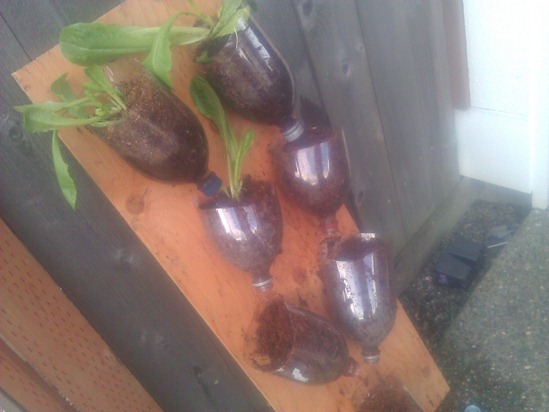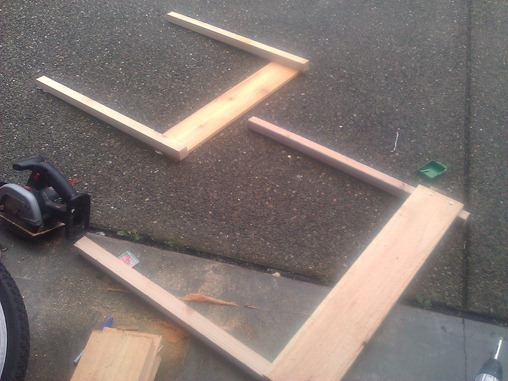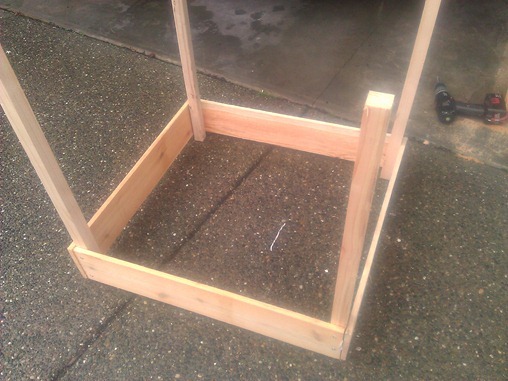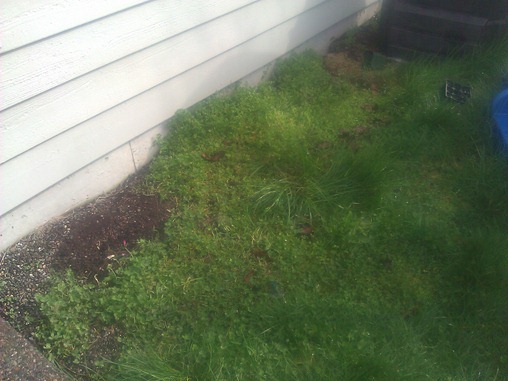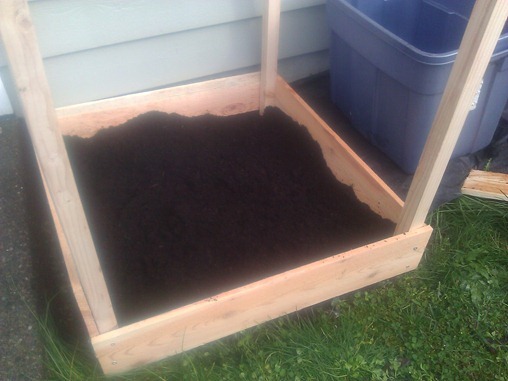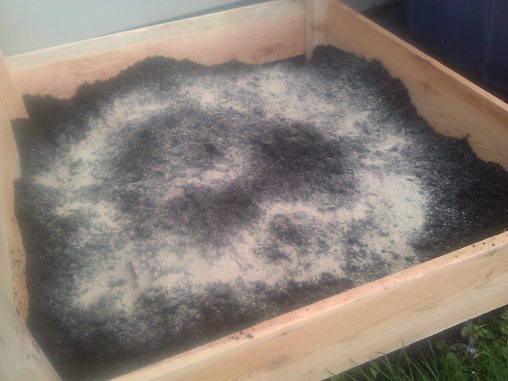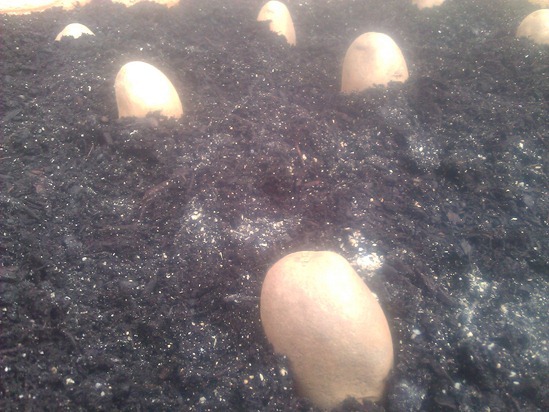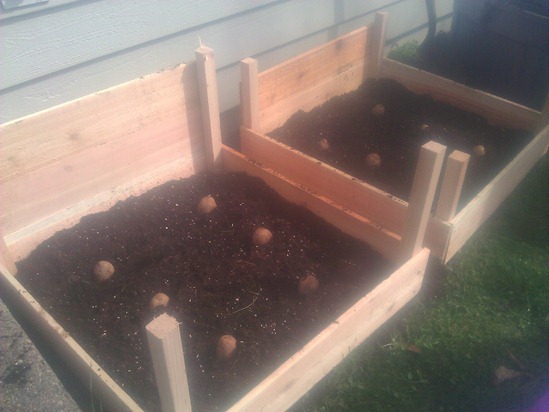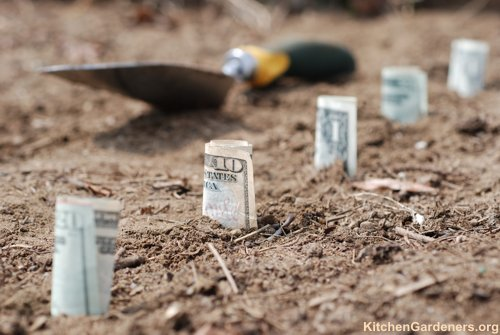Latticework that Works!
10.9 years ago guest post, pests, rabbits, vegetables, vertical gardening

Lattice fencing has been a go-to tool for gardeners forever. Its classic crisscross or grid structure has remained unaltered since its inception for one reason: it works! And as we all know, if it ain’t broke, don’t fix it.
Indeed, the lattice is the one "fixing" things – it provides privacy fencing for yards, serves as a blank canvas for clinging vines and ivy, helps climbing vegetables to reach new heights, keeps out unwanted critters, and functions as the main building material for decorative arbors, trellises, screens, pergolas and more!
Let’s learn a bit more about lattice by delving into two of its main purposes: vertical gardening and natural pest control.
Vertical Vegetables

One of the wonderful things about the overlapping strips in latticework is the structural support they provide for climbing vines and vertically-growing plants and vegetables.
In the world of trellis climbers, you can’t go wrong with selections such as tomatoes, cucumbers, melons, peas and pole beans.
Once the frost threat passes for your region, lay out your garden in front of your lattice incorporating each plant’s specific spatial needs – this info can be found on the transplant’s nursery container.
After placing each transplant in its specified hole, cover with soil (mixed with compost for nourishment) and water liberally. From here, attach each of the climbers to the lattice by looping a soft piece of twine around the main stem of each plant and tie the loose ends to the lattice.
As the plant grows, the twine will guide the stems to grow vertically against the lattice. As soon as the vegetables ripen, harvest them and enjoy a homegrown bite of your hard work!
Natural Pest Control
Another fantastic use for lattice is as a tool for border control for those annoying animals that threaten to move into your home, completely uninvited. Just take a look around at all of the crawl-space homes surrounded with lattice under-fencing and you will understand the widespread infestation issues that lattice solves in such a lovely manner!
But more to the point is how to keep hungry critters like rabbits and deer from feasting on the fruits (and vegetables!) of your labor: installing lattice fencing is a great way to keep their grubby little paws off your peas and carrots and little hooves away from your rose bushes.
Although a picket fence works well as an exterior border surrounding your entire yard, if it is not at least 6 feet tall it may not thwart all deer, as some can clear that height in a single leap. Rather than installing a completely new fence, consider adding a level of lattice at the top of your existing fence.
Attaching a length of lattice to the upper railing of your fence not only provides the additional height to keep the deer at bay but it also adds texture and interest to your fence and can soften the entire look of your yard if you allow vines or ivy to grow on the lattice. Plus, you are repurposing what you already have which is a great way to save some green for the planet and your wallet!
When it comes to rabbits, here’s a quick tutorial on installing a lattice border around your garden:

You’ll need:
- Wire rabbit fencing, with openings no larger than an inch: Ensure you have enough wire for the length of your entire garden area that is at least four feet wide
- Decorative lattice, in the same length as the wire fencing and at least three and a half feet wide
- Garden trowel
To build your border:
- Use the garden trowel to dig a narrow channel around the perimeter of your garden, approximately 12 inches deep
- Bury the wire rabbit fencing in the trench – there should be 12 inches below the surface and three feet above ground
- Fill in the trench halfway, leaving six inches of space from the surface
- Enclose the wire rabbit fencing with the lattice, burying the lattice approximately six inches deep
- Replace the remaining soil and firmly pack the ground around the new fencing
With this type of border, you have form and function. The decorative lattice masks the presence of the wire rabbit fencing, at least partially, and cursory garden admirers may not even notice it, depending on the style of lattice you choose. By burying the fence in the ground, you discourage burrowing and digging and at three feet tall, even Bugs Bunny will have difficulty breaching your barrier!
What other garden projects do you plan to complete with lattice?
Chris Long, a long-time store associate at a Home Depot in Illinois, writes for the Home Depot website. He enjoys writing on outdoor projects ranging from lattice to lumber and fencing.
vertical gardening recycling two liter bottles
12.1 years ago cheap, planter, recycle, upside down planter, vertical gardening
I am always looking for ways to enable myself to grow more in my small suburban yard. One technique to do this is using the maximum vertical space to your advantage. Whether this is growing your tomatoes and cucumbers up a trellis or growing some tomatoes from hanging upside down planters the more you successfully make use of this space the higher yields you can achieve.
One part of my yard has a great location which southern facing but do to concrete supported fence posts I can not grow anything there until now. With my homemade vertical planter I can grow a variety of small root vegetables such as lettuce, herbs, cherry tomatoes, flowers, etc.
Step #1: Cut to size. Depending on the soil needs of the plants you are growing cut off the tops using a utility knife or a good pair of scissors/kitchen shears. Cut just a bit lower on one side of the “planter” to provide a little more room for the next step and give the plant a natural way to hang over the side of the planter.
Step #2: Drill holes in top two caps. Not much else to describe here…this is done to restrict the flow of water to the planters below this one and prevent erosion of dirt out of the planters due to too high of water flow.
Step #3: Attach bottles. Pick any scrap piece of plywood you have around and attach the bottles with a couple of small screws. You can be as creative as you want on this one. A couple things to keep in mind, you want the water to flow between the planters to save yourself some time when watering these (you only have to water the top one) You also want to thing about how the plants may mature and couple block the sun from some of the plants below it, so staggering directions can help with this.
Step #4: Fill with dirt. Add some good potting soil (I went with my favorite coconut coil) and water from top to ensure water drips as expected. If you aim is off you can always add another screw (or adjust) to get everything lined up.
Below is a video of this vertical planter in action.
How to grow potatoes with a potato tower
12.1 years ago potato tower, potatoes, vertical gardening
I like to grow and eat potatoes, the problem is they can easily take over a plot of land and more than likely you will be growing potatoes in the same spot for a few years (not very good crop rotation) when one or two stray spuds don’t get harvested and a plant pops up the next year.
One great solution to this problem is a potato tower, this is a structure that keeps your potato plant and potatoes contained to an upright structure which can consist of many materials.
Recycled Tires
Fencing
Wood
I decided to go with the classic approach and build mine out of wood. I took four pieces of 1”X1” pine and cut to approximately 2.5 foot lengths. Side note: Just for the record I did not use tape measure for the construction of this potato tower. I then took two lengths of untreated/unstained cedar fencing and cut them in equal pieces.
Added a couple of screws to attach the cedar to the pine and kept doing this until I had a really cool upside down table without a top. Now you could pull out a level/square and pretty confident this will not be plum or true in any way…but it really doesn’t matter just holding some dirt and potatoes.
As for the location I found this great spot which grows weeds very well and not much of anything else.
After some minimal weeding and an laying down a layer of weed blocking fabric I plopped down my structure and added a few inches of rich compost.
To give the potatoes a head start I added a couple cups of bone meal, mixed well and added nine potatoes and topped with a few more inches of compost.
Now here is where the tower part comes from, as the potatoes greenery grows more than 3 inches above the surface you screw in some more cedar fencing to increase the height nearly cover with compost and repeat until you are tire of doing this. The theory is that your plants will grow potatoes over this entire height giving you many pounds of potatoes.
Important Tip: Any early setting variety of potato will produce all its potatoes at once so you will only get potatoes on the bottom six inches or so of your potato tower. So this technique only makes sense for later setting potatoes, here are a few to consider:
- Gourmet Fingerling Potato
- All Blue Potato
- Red Pontiac Potato
- Russet Potato
- German Butterball Golden Potato
UPDATE #1 (4/1/2012): Based on many of the comments on the mixed results of the success rate of this technique, I have decided to do a side by side N=1 experiment to see how my yields compare with 18 inches of soil versus 12 inches of soil using the same size and construction of a potato tower.
Tags: vegetables
The most profitable plants in your vegetable garden
15.3 years ago cheap, cilantro, garlic bulbs, organic, seedling, seeds, vertical gardening, winter garden
Many vegetables can be expensive to purchase by growing the most expensive vegetables in your garden and buying the least inexpensive vegetables at your grocery store you can easily help drop your food budget. This especially important for people like me with very limited space to grow everything that I consume.
It may be impossible to put a price on the satisfaction of bringing in a basket of produce fresh from your garden. As well as the enhanced flavors from having truly fresh produce from your garden compared to that of your local supermarket. Though when I was harvesting my potatoes this summer with my daughter I did have the thought, Would it have been smarter for me to grow something else in this space? I estimate out of the 4-5 square feet I used for these plants I probably got about $4-5 worth of potatoes.
I did a little research first to determine yields of various plants per square foot and secondly what the value (organic supermarket prices USD) of the yielded produce at harvest. Given I am a city dweller with a fairly small footprint for my vegetable garden (about 30-35 square feet) making decisions on what to buy at the supermarket and what to grow in the garden may be a huge money saver with just a few dollars invested in some seeds for your vegetable garden
Now from the results below you can see the winners for the most produce value per square foot are many of the leafy green vegetables/herbs (cilantro, lettuce, chives, dill, Swiss chard) next comes many of the larger vine plants (tomatoes, squash, pumpkins, peas) with many of the root plants taking up the rear. Now much of this makes sense where many of the vine plants grow on trellises and are allowed to spread, which I guess is sort of cheating the square foot rule but I will let it slide. Compared to the root plants whose production is entirely dependent on the space allowed in square footage they have to grow as well as these are normally inexpensive produce items to begin with.
| Vegetable | USD Value/SF |
| Cilantro | $ 21.20 |
| Arugula-Roquette | $ 20.92 |
| Green Salad Mix | $ 17.55 |
| Chives | $ 16.40 |
| Dill | $ 16.40 |
| Lettuce | $ 16.20 |
| Tomato, Cherry, small & medium | $ 15.57 |
| Turnip | $ 9.90 |
| Tomato, large | $ 9.50 |
| Squash, Winter | $ 8.40 |
| Tomatillo | $ 8.00 |
| Cucumber | $ 7.74 |
| Basil | $ 6.63 |
| Radish, Red | $ 6.22 |
| Pumpkin | $ 6.20 |
| Chard, Swiss | $ 6.14 |
| Celery | $ 6.00 |
| Squash, Summer | $ 5.96 |
| Choi | $ 5.70 |
| Peas, Snow | $ 4.50 |
| Pepper, Jalapeno | $ 4.50 |
| Squash, Summer, Zucchini | $ 4.17 |
| Onion, Bunching | $ 4.14 |
| Pepper, Bell | $ 3.60 |
| Brussels Sprouts | $ 3.59 |
| Carrots | $ 3.56 |
| Rhubarb | $ 3.25 |
| Squash, Winter, Butternut | $ 3.20 |
| Kale | $ 3.07 |
| Grass, Lemon | $ 3.00 |
| Peas, English | $ 3.00 |
| Onion, Bulb | $ 2.63 |
| Radish, White | $ 2.60 |
| Bean, Bush | $ 2.51 |
| Peas, Edible Pod | $ 2.50 |
| Artichoke, Globe | $ 2.40 |
| Cabbage, Chinese Napa | $ 2.24 |
| Squash, Winter, Delicata | $ 2.10 |
| Spinach, Spring/Fall | $ 1.80 |
| Leeks | $ 1.75 |
| Potatoes | $ 1.50 |
| Parsnips | $ 1.50 |
| Garlic | $ 1.37 |
| Squash, Summer, Yellow | $ 1.34 |
| Parsley | $ 1.31 |
| Corn | $ 1.25 |
| Squash, Winter, Acorn | $ 1.20 |
| Squash, Winter, Hubbard | $ 1.20 |
| Eggplant | $ 1.10 |
| Greens, Mustard | $ 1.10 |
| Rutabaga | $ 1.00 |
| Beet | $ 0.89 |
| Cabbage, Savoy | $ 0.80 |
| Broccoli | $ 0.80 |
| Kohlrabi | $ 0.75 |
| Cauliflower | $ 0.60 |
| Broccoli, Chinese | $ 0.60 |
| Cabbage | $ 0.50 |
Sources: http://www.mcgoodwin.net/pages/ppatch.html for plant yield information, http://shop.safeway.com for current produce prices
Now even with this information I will still plan on growing some onions and garlic since I more than likely would be forced to use dehydrated alternatives due to being too lazy to drive to the supermarket to buy fresh varieties. Though I may be adding some more herbs/greens to my garden this year.
One important thing to remember is you still have to eat the vegetables, throwing $20 worth or arugula or cilantro into the compost bin is not exactly a sound investment. You can also get higher yields by growing vertically, but don’t forget those tall plants produce a larger shadow so you may still need some extra ground space to support these alternate growing methods.
So go out and get some cheap vegetable seeds (or in many cases free) and plant some profitable vegetables in your backyard/patio garden this spring.
Tags: cilantro, compost, garlic bulbs, herb garden, organic vegetables, outdoor plants, pepper plants, tomato plants, vegetables
